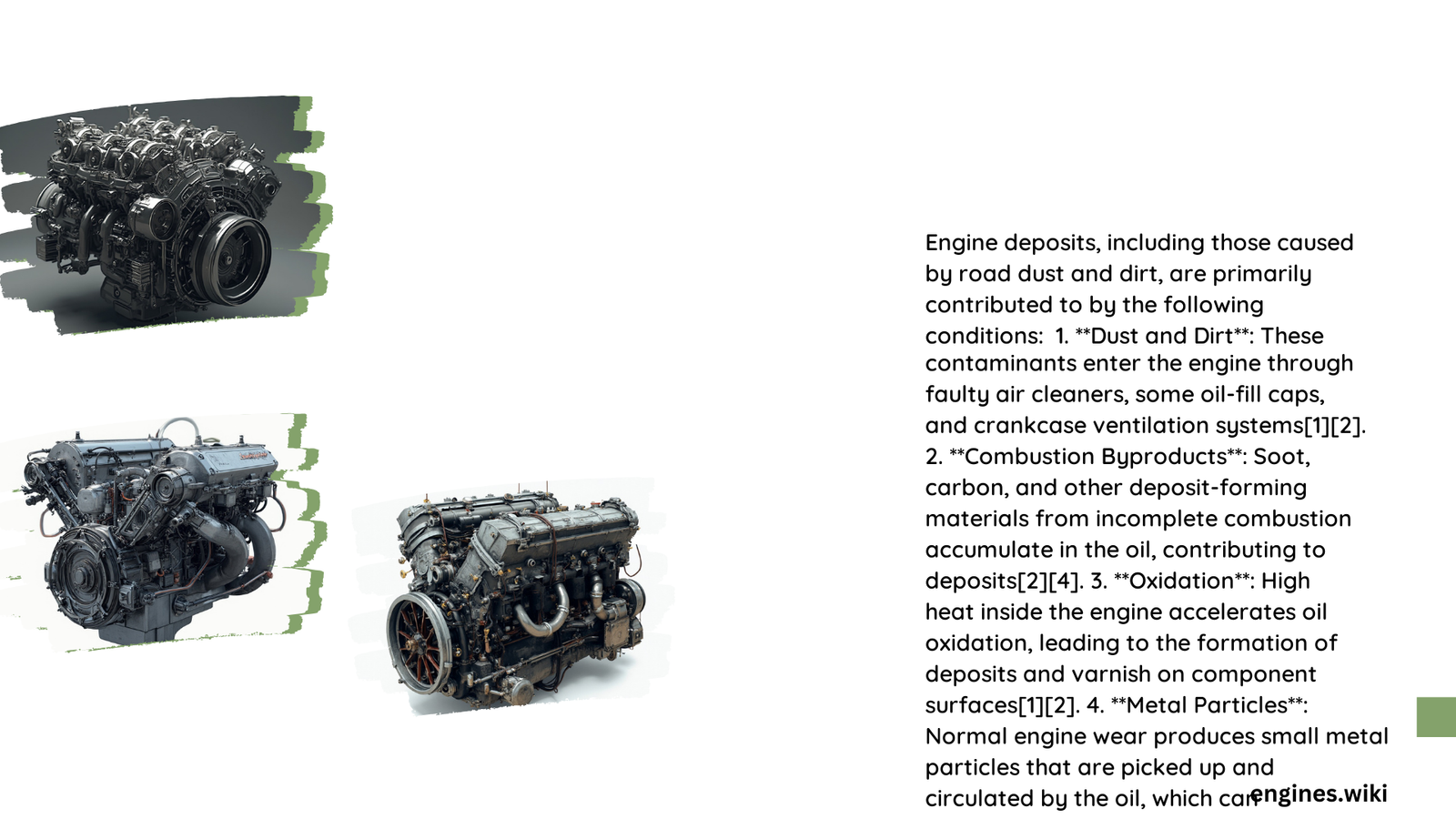Engine deposits from road dust and dirt are influenced by various environmental, mechanical, and maintenance factors. These include humidity, temperature, air quality, particle composition, engine operating conditions, and maintenance practices. Understanding these factors is crucial for minimizing engine wear and maintaining optimal performance. This article explores the key conditions that contribute to engine deposits from road dust and dirt.
What Environmental Factors Influence Road Dust and Dirt Deposits?
Humidity and Temperature
Humidity and temperature play a significant role in the accumulation of road dust and its potential to form engine deposits:
- High humidity: Reduces dust resuspension by keeping particles moist and heavier
- Low humidity: Increases dust resuspension, making particles more likely to become airborne
- High temperatures: Can dry out road surfaces, increasing dust resuspension
- Low temperatures: Keep surfaces moist, reducing dust resuspension
Air Quality
The air quality in an area significantly impacts the composition and toxicity of road dust:
- Urban areas with high industrial and vehicle emissions produce more toxic road dust
- Presence of heavy metals and other pollutants in the air contributes to more harmful engine deposits
Quantitative Data on Road Dust Loading
| Location | Total Road Dust Loading |
|---|---|
| Urban areas (e.g., Mexico City) | 5.4 – 173.3 g/m² (median: 43 g/m²) |
Emission rates for PM₁₀ from paved roads:
– Range: 0 – 2000 μg per vehicle meter travelled
– Average: 79 μg per vehicle meter travelled
How Does Particle Size and Composition Affect Engine Deposits?

Road dust particles vary in size and composition, which influences their potential to form engine deposits:
- Particles < 50 μm: Primarily from industrial emissions and vehicle-related sources (tire and brake wear)
- Particles 100-250 μm: Often from geogenic sources and abrasion processes
Chemical composition includes:
– Cu, Pb, Cr, Ni, V, Sb, and Mo (associated with exhaust and non-exhaust traffic emissions)
– Soil erosion by-products
– Solid waste incineration by-products
What Mechanical Conditions Within the Engine Contribute to Deposits?
Operating Temperature
Engine operating temperature significantly affects deposit formation:
- Higher temperatures accelerate oil degradation
- Engines operating consistently above 100°C are more prone to varnish and sludge formation
Fuel Type and Oil Viscosity
- Diesel engines produce more soot and particulate matter compared to gasoline engines
- Oil viscosity is crucial for proper lubrication and deposit prevention:
- Lower viscosity oils may not provide adequate lubrication at high temperatures
- Recommended viscosities: 5W-30 or 10W-40 for most driving conditions
How Do Maintenance Practices Affect Engine Deposits?
Frequency of Oil Changes
Regular oil changes are essential to mitigate the effects of road dust and dirt on engine deposits:
- Recommended frequency: Every 5,000 to 7,500 miles (depending on manufacturer specifications and driving conditions)
- Benefits: Removes contaminants and degraded oil that could contribute to deposit formation
Air Filter Replacements
Replacing air filters regularly is critical to prevent particulate matter from entering the engine:
- Recommended frequency: Every 15,000 to 30,000 miles or as specified by the manufacturer
- Effectiveness: Can reduce particulate matter ingestion by up to 90%
Cost Estimates for Maintenance
| Maintenance Task | Estimated Cost Range |
|---|---|
| Oil Change | $30 – $100 |
| Air Filter Replacement | $10 – $50 |
What Are the Long-term Effects of Road Dust on Engine Performance?
While specific quantitative data on the long-term effects of road dust on engine performance is limited, it’s known that:
- PM₁₀ and PM₂.₅ particles can be ingested by the engine through the air intake
- These particles can lead to increased wear on engine components
- Over time, this can result in reduced engine performance and efficiency
How Can Drivers Minimize the Impact of Road Dust on Their Engines?
To minimize the impact of road dust on engine deposits:
- Adhere to recommended maintenance schedules
- Use high-quality engine oils and air filters
- Avoid driving on unpaved or dusty roads when possible
- Consider using engine air intake pre-filters in dusty environments
- Regularly clean the engine bay to remove accumulated dust and dirt
By understanding the conditions that contribute to engine deposits from road dust and dirt, and implementing proper maintenance practices, drivers can significantly extend the life and performance of their engines.
References:
1. Emission Factor Documentation for AP-42, Section 13.2.1, Paved Roads
2. Road Dust in Urban and Industrial Environments
3. The Safest Way to Road Dust Control
